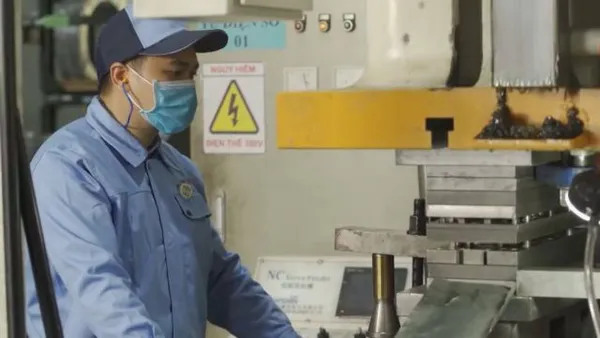 Economy
Economy


|
| Nguyễn Quý Dương |
Nguyễn Quý Dương, deputy director of the Ministry of Agriculture and Rural Development’s Plant Protection Department, speaks with Hải quan (Customs) newspaper about China’s import policies and the need to improve the quality of Vietnamese fruits to meet stricter standards
China has tightened import standards for Vietnamese fruits since late last year, making it difficult for firms to access the market. What is your opinion of this move?
China has been easing its import policies for a long time so that poor provinces like Yunnan and Guangxi can promote their economies via local import and export activities.
Now, China is starting to tighten management of these activities, especially of non-quota exports.
In China's domestic market, farmers used to use chemical fertilisers and pesticides widely, but things have changed a lot.
China now cares about the quality of agricultural products and the strict enforcement of food safety requirements. Thus, the application of tougher standards on imported fruits is totally understandable.
Vietnamese fruits must meet the procedures – including food safety certificates, origin traceability, technical requirements and phytosanitary certification – to be exported to China.
This somehow is a good sign for Vietnamese products. Producers must change their methods to produce products that meet the market’s requirements. Apart from export market, the domestic market will benefit if producers manage to do so.
Can you talk in more detail about the fruits that have been exported to the Chinese market since the beginning of this year? Are non-quota exports the only ones to be hit by the strict standards?
Việt Nam has exported nine types of fresh fruits to China: dragon fruit, watermelon, lychee, longan, banana, mango, jackfruit, rambutan and mangosteen.
On April 26, the two countries signed a protocol to export mangosteen and dairy products from Viêt Nam to China.
Last May, China revealed the new policy requiring exported Vietnamese fruits to have codes for origin traceability and codes indicating their packaging facilities. Currently, Việt Nam has 1,300 codes of origin traceability and more than 1,435 codes for packaging facilities.
Fruits may be stuck at the border gate due to the bumper crops and large export volumes, but this is not because of a lack of communication between enterprises and China.
The difficulties are mainly in fruits which have large export volumes to China but do not meet export standards. Durian and coconut are among these fruits.
Nationwide, about 47,000 hectares of land is used to grow durian. The fruit has brought high profits over the last two years.
Last year, one hectare of durian with an average yield of about 20 tonnes could bring in more than VNĐ 1 billion (US$43,000) for a household. The fruit was priced at up to VNĐ70,000 ($2.8) per kilogramme.
In the past, Vietnamese durian has been mostly exported to China. This year, that has not been possible due to the higher export standards.
Is it possible that China will introduce even stricter regulations on imported fruits?
At the moment, China accepts the codes for origin traceability and packaging facilities granted by Việt Nam. It has not inspected the process by which the codes are granted.
But in the future, it’s possible China will require specific conditions for each code or ask for real inspections.
If we fail to comply with the standards, China will likely to say no to all certificates and codes supplied by Việt Nam. The Plant Protection Department has warned all provinces and cities to strictly follow the standards.
We can draw on our experience working with China on rice exports. Enterprises must be on China's list of approved importers in order to bring goods to market.
What urgent measures should be taken to help the Vietnamese fruit industry be more active in the Chinese market?
The urgent task, in my opinion, is to review the areas that have been granted origin traceability and speed up production following VietGAP standards.
In the past few years, Chinese firms have rushed to buy up lychee grown with origin traceability and VietGAP certificates even though the certifications were not compulsory.
In addition, it is necessary to have policies for farmers to form groups and co-operatives to introduce their fruits to new markets in developed countries. The fruit industry needs policies to promote production and consumption.
The Ministry of Agriculture and Rural Development programme connecting 15,000 co-operatives is an example. It helped protect the outputs of the co-operatives and successfully apply technology in the production process. China and Thailand are among the countries that have applied this model effectively.
It’s obvious that non-quota fruit exports have barely been able to enter the Chinese market under the strict requirements.
The Ministry of Agriculture and Rural Development has a specific plan to promote the major exports to China. It has prepared procedures to be able to export durian by 2020.
Other potential fruits such as coconut, grapefruit, passion fruit and avocado will be soon evaluated to see whether they meet the requirements for export. — VNS